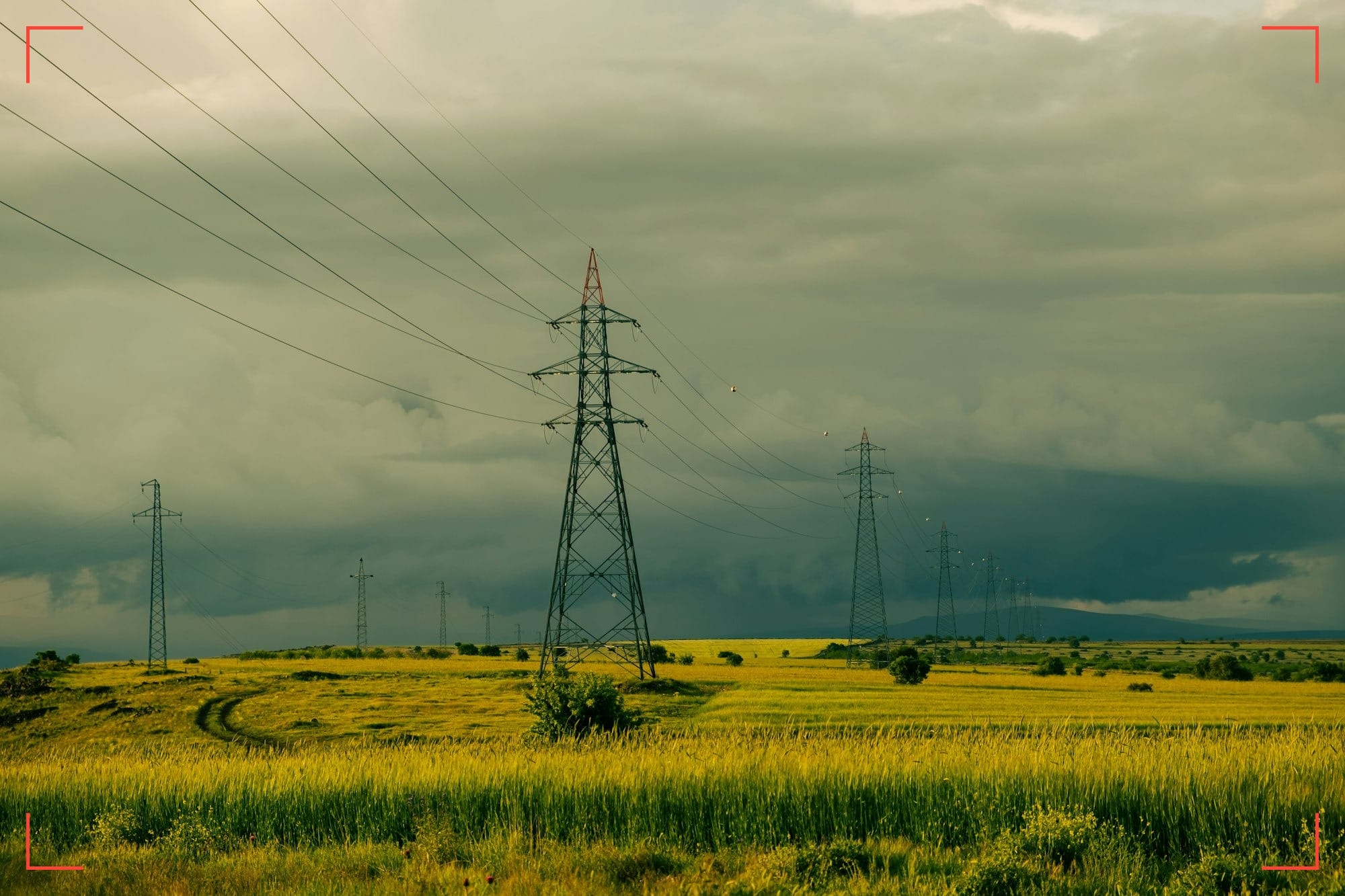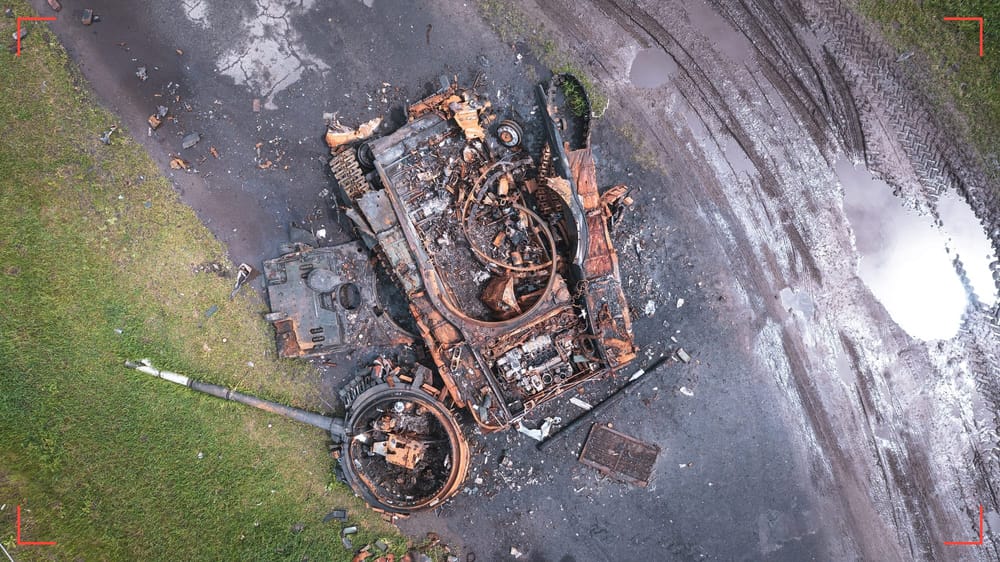Russian/Ukraine Conflict: Energy Impact SpecialREPORT
Russian Energy After Ukraine: Operational Fallout from Pipeline Disruptions | JUL 2025

Report Details
Initial Publish Date
Last Updated: 25 JUL 2025
Report Focus Location: Europe
Authors: AGC, MA
Contributors: GSAT
GSAT Lead: MF
RileySENTINEL provides timely intelligence and in-depth analysis for complex environments. Our global team blends international reach with local expertise, offering unique insights to navigate challenging operations. For custom insights or urgent consultations, contact us here.
Key Findings
- After the fall of the Soviet Union, Europe saw an opportunity to deepen economic and, especially, energy interdependence with Russia
- The cheap energy from Russia created a high dependence on the European side and the false hope of “change through trade” (Wandel durch Handel in German)
- Many European countries depended heavily on Russian gas and imported between 60% and even 100% of their total gas imports, even Eastern European countries that were critical of the dependence on Russian gas
- The Russian invasion of Ukraine provided the shock that proved to be pivotal for the swift decoupling from Russian energy; Europe diversified its energy sources, mainly to LNG
- Russia has weaponized energy in the past and still exerts influence through countries like Hungary, Slovakia, or Serbia to divide Europe on topics that concern Russian interests
- The closure of Ukraine’s gas transit route has eliminated a critical emergency supply corridor, thereby increasing vulnerability in the event of infrastructure sabotage or extreme winter demand.
- Transnistria’s energy isolation since January 2025 has rendered it a humanitarian weak point and a pressure point in Russia’s broader destabilization strategy.
- Moldova’s upcoming 2025 elections present a real risk of internal shift toward Moscow, with energy leverage playing a central role in Russia’s influence campaign.
Summary
This report aims to analyze the development of energy imports from Russia and the impact of disruptions and policy changes on the energy security of Eastern Europe and Eurasia. Russia has already used energy as a tool for economic blackmail by unilaterally cutting gas flows to European partners in 2006, 2009, 2014, and before and after its invasion of Ukraine in 2022. When Gazprom sharply cut supplies in 2022, Europe realized that something had to be done to reduce its dependence on Russian oil and gas. The sabotage of Nord Stream 1 and 2 has further emphasized the importance of diversifying energy imports from other suppliers.
Europe successfully transitioned its energy supplies from Russia to other sources such as Norway, the U.S., and Qatar, but this came at a high cost to avoid a severe energy crisis during the continent's winter. Europe managed to reduce its dependence on Russian pipeline gas, mainly thanks to liquified natural gas (LNG), the import of which increased by almost 70% between 2021 and 2022. Russian energy continues to be supplied to Europe, and this report discusses the risks related to the client’s energy access, political stability, and the strategic positioning of their region.
Current Events/Major Issue
On January 1, 2025, the transit of Russian gas through pipelines via Ukraine ceased due to Ukraine’s refusal to extend the contract with Russia’s Gazprom. The date marked a historic event since the pipeline running through Ukraine was Russia’s most significant gas link to European markets after the sabotage of the Nord Stream pipeline in 2022. Ukraine decided to halt the transit of Russian gas through its territory due to national security concerns and its desire to prevent Russia from earning billions from gas exports. The only Russian gas route still open after this halt is TurkStream, a pipeline that passes through the Black Sea to export gas to Hungary and Serbia. With only 5% of Europe’s gas needs covered by Ukraine transit gas, analysts expect that alternative solutions can be found to fill that gap.
The decision came against the background of Russia’s weaponization of energy supplies in the past to exert geopolitical pressure on Europe. This topic will be explained in more detail in section 4. After Russia invaded Ukraine, Europe reacted quickly and found alternative energy sources, namely LNG. Therefore, the importance of Russian gas had already declined before January 1, 2025. In 2024, Europe only received 14.5 billion cubic metres (bcm) of gas from Russia through the pipelines in Ukraine, representing less than 6% of total EU gas imports for that year. This is a stark decline compared to the 93bcm in 2017 and the 136bcm in 2005.
The influence that Russia still exerts over EU members and candidates is visible in debates around energy security and new sanctions packages. Hungary and Slovakia were the harshest critics of Ukraine’s decision to halt the transit of Russian gas and blocked EU decisions on new sanctions on Russia. While the share of Russian gas imports in Hungary is around 47% and even around 90% in Slovakia, the countries already have plans to diversify their gas imports. It is a strategy of Russian President Putin to use energy as a means to divide the EU on topics that concern Russia. Only recently, Slovakia lifted its veto on the EU’s 18th sanctions package after it had received guarantees from the bloc to be supported in case of negative impacts of a phase-out from Russian gas. Transnistria, the Moldova breakaway region, on the other hand, was hit hard by the halt in Russian gas supplies and immediately lost heating and hot water on January 1, 2025. While Moldova can import gas from Romania and receives support from the EU, the situation in Transnistria remains dire.
Figure 1. Monthly Russia–EU Pipeline Gas Flows (Excluding via Turkey), 2022–2025
Figure 2. Selected European Countries’ Imports of Russian Natural Gas as Shares of Total Consumption, 2021 vs. 2024
Background
The collapse of the Soviet Union led Europe to believe that the main threat to European security had been eliminated, and the continent could benefit from cheaper oil and enhanced energy security. The Russian energy sector also provided exciting opportunities for European investment. Given these circumstances, it's no surprise that they led to a deeper energy integration between Europe and Russia. Germany stood symbolically for the growing interdependence in the energy sector and its economic relations with Russia. The slogan was “change through trade” (German: Wandel durch Handel), and European leaders believed they could lead Russia on a democratic path.
Eastern European leaders warned early on that the assumption was wrong and that Russia would not follow the path expected by Europe. The Baltic States and Poland were among the harshest critics of the change through trade hypothesis. Russia, early on, confirmed those fears by weaponizing energy resources. The strategy was evident in the “gas wars” of 2006 and 2009 with Ukraine, and further escalated in 2014 over the annexation of Crimea. Russia built a web of pipelines to reduce its exposure to the transit route through Ukraine: this included the Blue Stream (2003), Yamal-Europe (2006), the Minsk-Kaliningrad (2011), Nord Stream 1 (2011), and TurkStream (2020) pipelines.
By 2021, Russia supplied over 40% of the EU’s total gas imports. In 2020, Germany imported around 65% of its gas imports from Russia, Latvia, and Czechia, even 100%. In 2021, Hungary still received 95%, and Slovakia nearly 100% of their gas imports from Russia, explaining their opposition to EU policies against Russia. Non-EU states like Moldova and North Macedonia were also 100% reliant on Russia. This brief historical overview highlights the extent to which Europe has reduced its reliance on Russian gas—achieved in a short time, though at significant cost. But Europe still imports Russian gas – a forecast assumes 13% for 2025 – and thus supports the Russian war in Ukraine with some billion dollars.
Figure 3. Russia’s Natural Gas Exports
Figure 4. Europe Natural Gas Imports
Figure 5. European Natural Gas Price
Figure 6. EU Member States’ Net Gas Import Dependency on Russia, 2020
Analysis and Future Outlook
The decision by Ukraine to halt the transit of Russian gas through its territory on January 1, 2025, is more than a technical or commercial event—it marks a symbolic break in the geopolitical energy relationship between Russia and Europe. It crystallizes a shift already underway: the collapse of the post-Soviet illusion of energy interdependence. More broadly, the event is a key inflexion point in the remapping of Eurasia’s energy geography and Europe’s strategic calculus. The halt has not triggered an immediate crisis, largely due to the EU’s significant progress in diversifying its energy sources since 2022. However, the medium- to long-term impacts of this decision are far from fully realized, and the region remains vulnerable to both energy insecurity and political destabilization, especially in frontier states and contested zones.
Key actors
Key actors in this realignment include the Russian state, primarily through Gazprom, which continues to leverage remaining energy routes, such as TurkStream, to exert influence in Central and Southeast Europe. Hungary and Slovakia, though planning diversification, remain heavily dependent and have become political leverage points for Moscow within the EU. On the other side, Ukraine emerges as a bold energy actor seeking not only national security but also alignment with Western institutions. Moldova, Romania, and the EU Commission are becoming increasingly central in constructing an alternative energy architecture, while breakaway regions such as Transnistria face isolation and humanitarian stress.
Motivations
Motivations for Russia’s energy strategy align with its broader geopolitical objectives: sustaining revenue flows to fund its war in Ukraine, maintaining political influence in European capitals through asymmetric dependencies, and exploiting divisions within the EU. For Ukraine, halting transit revenue is a calculated sacrifice in its pursuit of sovereignty and long-term alignment with Western norms. The EU, for its part, seeks to secure supply without reintroducing intra-EU frictions—particularly between older member states and newer, more Russia-exposed members.
Possible scenarios
Possible scenarios range from a relatively smooth transition to a new regional gas infrastructure—anchored in LNG, interconnectors, and storage facilities—to more turbulent developments. A severe winter, infrastructure sabotage, or political instability in critical transit countries (e.g., Turkey, Romania) could reintroduce volatility. Russia may also intensify hybrid tactics—such as disinformation campaigns or clandestine sabotage—targeting energy infrastructure or decision-making processes, particularly in vulnerable states like Moldova or the Balkans. Alternatively, increased EU solidarity, ongoing infrastructure investment, and legal countermeasures (such as the Gas Package reform) could stabilize the region and marginalize Russia’s energy influence permanently.
The situation in Moldova underscores how energy dependency can be weaponized to exert geopolitical influence, particularly in contested regions like Transnistria. Following the cessation of Russian gas transit through Ukraine in January 2025, Transnistria—already politically isolated—has faced acute shortages in heating and electricity. This crisis has exposed the enclave’s near-total reliance on Russian energy supplies and created a severe humanitarian vulnerability. Moscow appears to be leveraging this dependency not only to pressure Tiraspol but also to shape the political environment in Chișinău ahead of the September 2025 parliamentary elections. Moldovan intelligence reports suggest that, should a pro-Russian government come to power, Russia could secure formal approval to reinforce its military presence in Transnistria. In this context, the gas cutoff serves as more than an economic disruption—it is a strategic tool to destabilize Moldova internally and pave the way for broader regional influence.
- Degrading Factors
- The loss of Ukrainian transit eliminates a critical redundancy in Europe’s gas network, reducing flexibility in emergency supply situations
- Russian energy influence remains significant in certain EU and non-EU states (e.g., Hungary, Slovakia, Serbia), which Moscow exploits to block sanctions and fragment EU consensus
- Fragile political situations in energy-dependent regions such as Transnistria, Serbia, or North Macedonia raise risks of social unrest or political destabilization if energy shortfalls persist
- The high cost of diversification and LNG imports strains the budgets of low-income countries and could lead to political backlash or populist movements opposed to EU energy policies
- Ongoing hybrid threats by Russia, including cyberattacks and sabotage against energy infrastructure, remain plausible and would significantly destabilize local environments
- Stabilization Factors
- Europe has significantly strengthened its infrastructure with new LNG terminals, reverse-flow capabilities, and increased storage capacities, enhancing overall resilience
- EU financial and technical support to vulnerable states like Moldova, along with regional initiatives (e.g., the Three Seas Initiative), helps maintain cohesion and security
- Long-term contracts with Norway, the U.S., and Qatar provide more predictability and price stability than Russian contracts previously offered
- Ukraine’s bold stance has further consolidated Western unity in isolating Russia and has demonstrated the feasibility of a Russian energy-free European future
- Ongoing institutional reforms in the energy sector across Central and Eastern Europe, including regulatory alignment with EU norms, enhance transparency and reduce Russian influence
Impact and Recommendations
The cessation of Russian gas transit via Ukraine marks a pivotal shift that is unlikely to cause immediate energy supply disruptions but carries significant implications for the operational landscape of NGOs, private sector entities, and field personnel across Eastern Europe and Eurasia. The most immediate concern is not a gas shortage per se, but rather the political and socio-economic ripple effects across regions that remain energy-insecure or politically fragile.
NGOs operating in Moldova and unrecognized regions, such as Transnistria, face heightened humanitarian demands. With heating and hot water disruptions reported in Transnistria, humanitarian agencies must rapidly adapt their contingency planning. In politically ambiguous regions, service provision may also be constrained by the lack of legal and logistical clarity about supply routes. Similarly, organizations operating in the Western Balkans or border regions should prepare for possible unrest due to energy shortages or price spikes, especially during winter.
Private sector actors, particularly those involved in logistics, infrastructure, and energy-intensive industries, are encouraged to reassess risk exposure. Countries like Slovakia and Hungary, although currently stable, could become hotspots of political friction or populist backlash. Companies reliant on cross-border energy flows should evaluate alternative routing and storage capacity, especially given the reduced redundancy in the network after the Ukrainian route's closure.
Field staff across the region also face growing operational risks. This includes cyber threats to field communications, disruptions due to political protests or supply failures, and increased scrutiny in pro-Russian or unstable areas. Security protocols must therefore be expanded to include not just physical threats, but also critical infrastructure vulnerabilities and hybrid destabilization tactics.
Recommendations:
- For Private Sector Actors: Companies operating in energy-intensive sectors or critical infrastructure—particularly in Slovakia, Hungary, and Moldova—are advised to update scenario planning for winter 2025–2026, focusing on potential Russian-driven energy disruptions. Country-specific contingency plans should be developed, taking into account differing levels of exposure to Russian supply chains. Energy investors should coordinate with EU-backed financing programs to mitigate geopolitical risk, while IT and logistics firms must urgently reinforce cybersecurity protocols to guard against sabotage targeting energy assets. Quiet engagement with local stakeholders will be essential in politically sensitive environments to anticipate backlash and maintain operational continuity.
- For NGOs and Humanitarian Organizations: Humanitarian agencies in Moldova and adjacent regions are encouraged to review cold-weather contingency plans and pre-position alternative energy solutions, such as mobile heating units, for vulnerable populations. Given Transnistria’s acute dependence on Russian gas, aid groups should monitor the enclave closely and prepare for worsening humanitarian conditions. Regional NGOs should collaborate to build an informal energy-resilience network to coordinate responses and share early-warning indicators. In light of Moldova’s September 2025 elections, organizations working near conflict-prone areas—particularly southern Ukraine and Transnistria—should develop contingency measures in coordination with EU diplomatic missions and election observers to anticipate border instability or troop buildup scenarios.
RileySENTINEL
Our RileySENTINEL platform delivers comprehensive global, regional, and country-specific situation reporting and analysis. Powered by the Riley Risk team, our Geopolitical & Security Analysis experts provide:
- Timely, on-the-ground intelligence
- In-depth analysis of high-risk environments and events
- Proactive insights to navigate volatile operational contexts
Our globally distributed advisors and analysts combine global reach with regional expertise and local insights, empowering clients with unique perspectives to make informed decisions in challenging environments.
Enhance Your Risk Management Strategy
For deeper insights or enhanced custom reporting tailored to your specific needs, we offer on-demand consultations. An expedited response option is typically available, based on our team and advisor availability.
To explore how our risk advisory services can strengthen your business operations and help you achieve more, schedule a call with the RileySENTINEL team using the service booking link below.
Expert Analysis On-Demand: Request Support
Leverage RileySENTINEL's expert team for deeper analysis and tailored insights:
- On-demand consultations with our global network of advisors
- Custom reports focused on your specific operational contexts
- Proactive risk mitigation strategies for volatile environments
- In-depth analysis of regional stability factors and future outlooks
- Expedited response options for time-sensitive inquiries
Click this link to be redirected to the support request page.
RileySENTINEL: Global Insights. Local Expertise.






